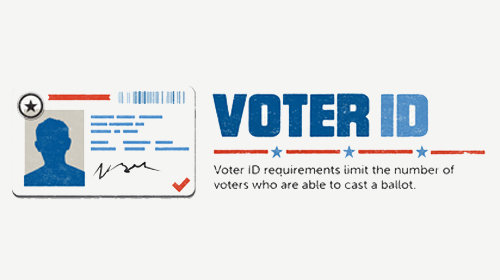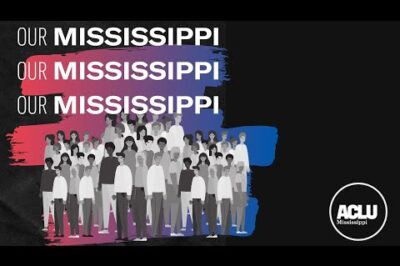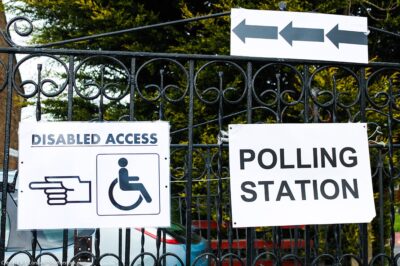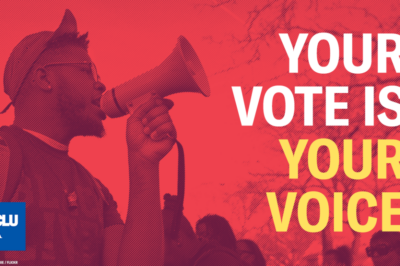
Cross-posted from ACLU of Pennsylvania blog
Yesterday was a bonanza for data geeks, although not nearly so satisfying for those looking for a precise number of voters without valid ID for voting. By the end of the day it had become clear, however, that hundreds of thousands of registered voters are at risk of losing the ability to vote if the voter ID law goes into effect.
The bulk of the day involved testimony from Dr. Siskin, Director of BLDS LLC and an expert statistician. Siskin was hired by the plaintiffs to take the SURE database (the state’s voter registration database) and compare it to the PennDOT database (containing information about driver’s licenses, non-driver’s photo IDs, and the DOS ID) to determine how many registered voters do not have valid PennDOT ID. (Although several other forms of ID are acceptable for voting, such as a passport, expert testimony in the previous trial showed that only a small percentage of people without PennDOT ID have one of the other forms.)
Siskin discussed the findings in his report (available here and highly recommended for anyone interested in this issue) and his methodology, which involved a 12-step process using a variety of techniques for getting the broadest possible number of matches, including using an algorithm that accounts for typos and transposed letters and numbers. (The steps are available in Siskin’s report in Appendix A.)
Siskin also broke the data down by all registered voters as well, as those who voted in November 2012. Of the roughly 8.2 million registered voters, he found that 251,879 could not be matched to a PennDOT ID. When narrowed down to those who voted in 2012, the number was whittled down to 89,753. Additionally, another 259,536 voters were a positive match for having an ID expired over a year by the November 2013 election and thus invalid for voting purposes. Of November 2012 voters, 53,293 had an expired PennDOT ID.
Siskin’s totals: 511,415 (6.21%) of all registered voters do not have ID. 143,046 (1.74%) of voters who cast a ballot in November 2012 do not have valid ID.
Of course, Siskin noted, there are many variables at play, including both false positives and false negatives for the “unmatched” list. The exact figure wasn’t as important as the fact that even accounting for database errors and other problems, it was clear that hundreds of thousands of Pennsylvania voters do not have a valid PennDOT ID.
The commonwealth hired William Wecker, another statistician and consultant, to review Siskin’s report. Mike Rubin, plaintiff’s attorney, questioned Siskin about Wecker’s criticisms of Siskin’s report. One by one, Siskin demolished the majority of Wecker’s claims (the bulk of which are on p. 5, paragraph 12, of Wecker’s report). Wecker took Siskin to task for not accounting for other non-PennDOT forms of ID an eligible voter could use and claimed to have found tens of thousands of voters of the 511,415 who would have other forms of ID.
Siskin countered that his charge was simply to match the PennDOT and voter databases – not to determine how many voters had some other form of valid ID for voting, which would be a much bigger task. He also eviscerated several of Wecker’s claims (not all of which are noted here):
- Wecker claimed that 18,217 voters lived in personal care facilities eligible to print their own voting IDs. However, “eligible” to print does not, of course, mean that the facilities will do so. More glaringly, Wecker estimated that anyone 65 and over living within a tenth of a mile of a care facility was a resident , rather than relying on matching the address of the facility with voter records.
- Wecker also claimed that 48,046 voters on Siskin’s list were college students and therefore could use their school IDs for voting. Leaving aside the fact that not all colleges are producing IDs with expiration dates (including Bucknell University), Wecker derived this list by assuming that every voter aged 18-28 who lives within a mile of a university is a college student. As Siskin pointed out, schools such as Temple , University of Pittsburgh, and University of Pennsylvania are located in urban areas where a mile radius encompasses many non-students. (When the radius was reduced to a tenth of a mile, that number dropped to roughly 11,000 people.)
- Wecker stated that he found 2,547 individuals living on military bases who would therefore possess military IDs, which are eligible for voting (if they include expiration dates). However, Wecker’s set takes in everyone on the list who lives within three miles of a military base.
Even if all of Wecker’s numbers were accurate (and not accounting for overlap of populations, such as those who vote absentee and those in care facilities), Siskin noted that there would still be well over 300,000 individuals without a valid PennDOT ID.
Siskin also testified about his analysis of the demographics of those without PennDOT ID. Among his findings:
Registered Voters Lacking Valld PennDOT ID By Race/Ethnicity (From Table 2 of Siskin’s report)
White (non-hispanic)
5.49%
African-American
10.80%
Hispanic
10.89%
Asian
11.17%
American Indian
8.17%
Multirace
8.53%
Registered Voters Lacking Valid PennDOT ID By Age (From Table 4 of Siskin’s report)
18-22
11.07%
23-49
6.81%
50-69
3.21%
70-79
4.62%
80-89
11.86%
90+
40.58%
Analyses were also done by gender and political party, as well as an analysis of round-trip driving times for voters to get to PennDOT to obtain an ID. (These are all available in the tables in Siskin’s report.)
Alicia Hickok, an attorney representing the defendants, attempted to chip away at Siskin’s numbers in a prolonged cross examination by asking about registered voters who might now be incarcerated, those with suspended licenses who would show up in the PennDOT database as having expired licenses, and people who had moved out of state. She also took Siskin to task for not using other databases available to figure out which voters might have died, who might have moved away, and who is in prison and therefore ineligible to vote.
Siskin acknowledged that his numbers might be reduced to some small degree but reiterated his original assessment – that hundreds of thousands of eligible Pennsylvania voters are at risk of being disenfranchised under the voter ID law.
The court also heard testimony from Margaret Pennington, a 90-year-old voter without voter ID.
Learn more about voter suppression and other civil liberties issues: Sign up for breaking news alerts, follow us on Twitter, and like us on Facebook.




